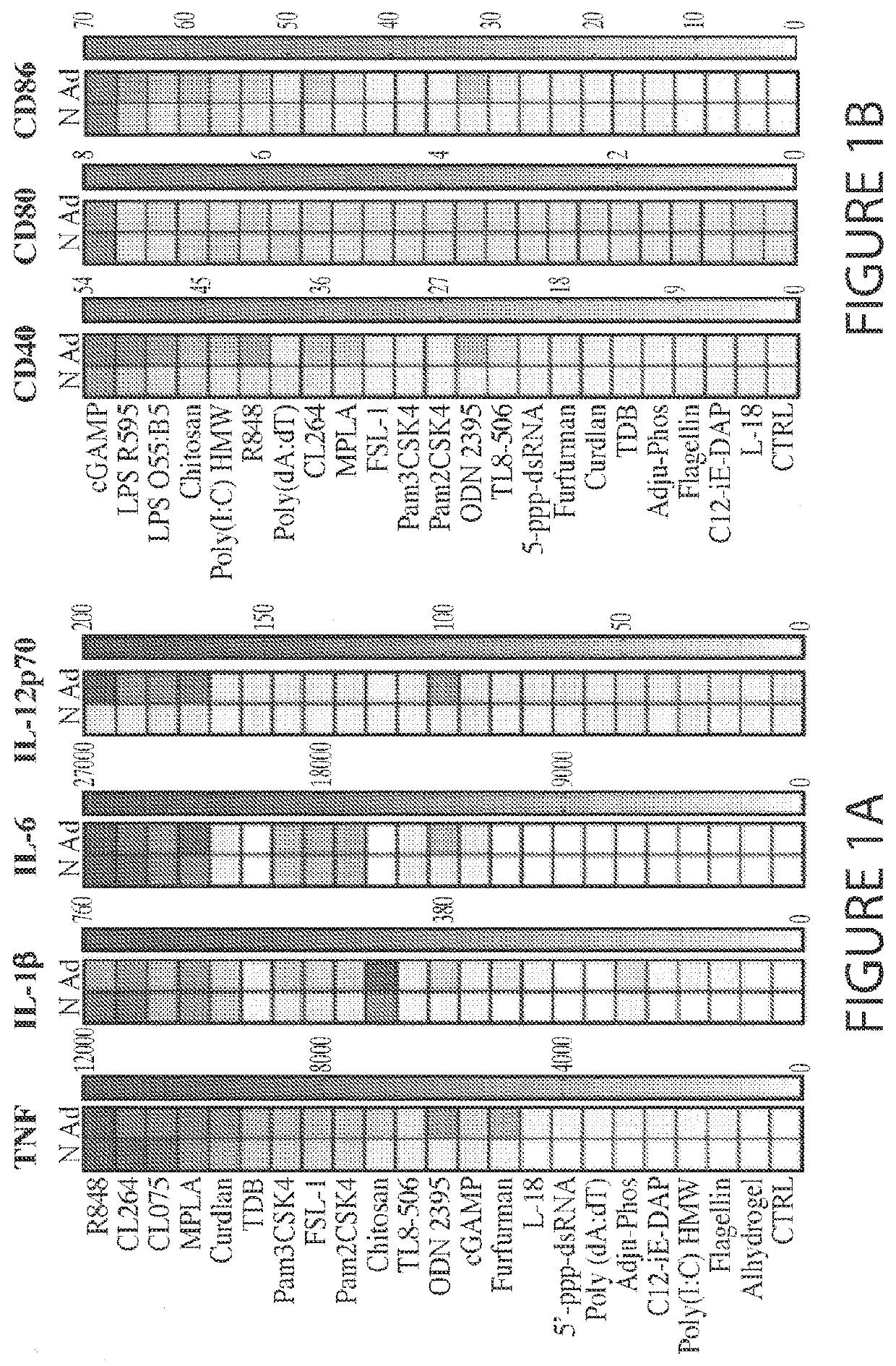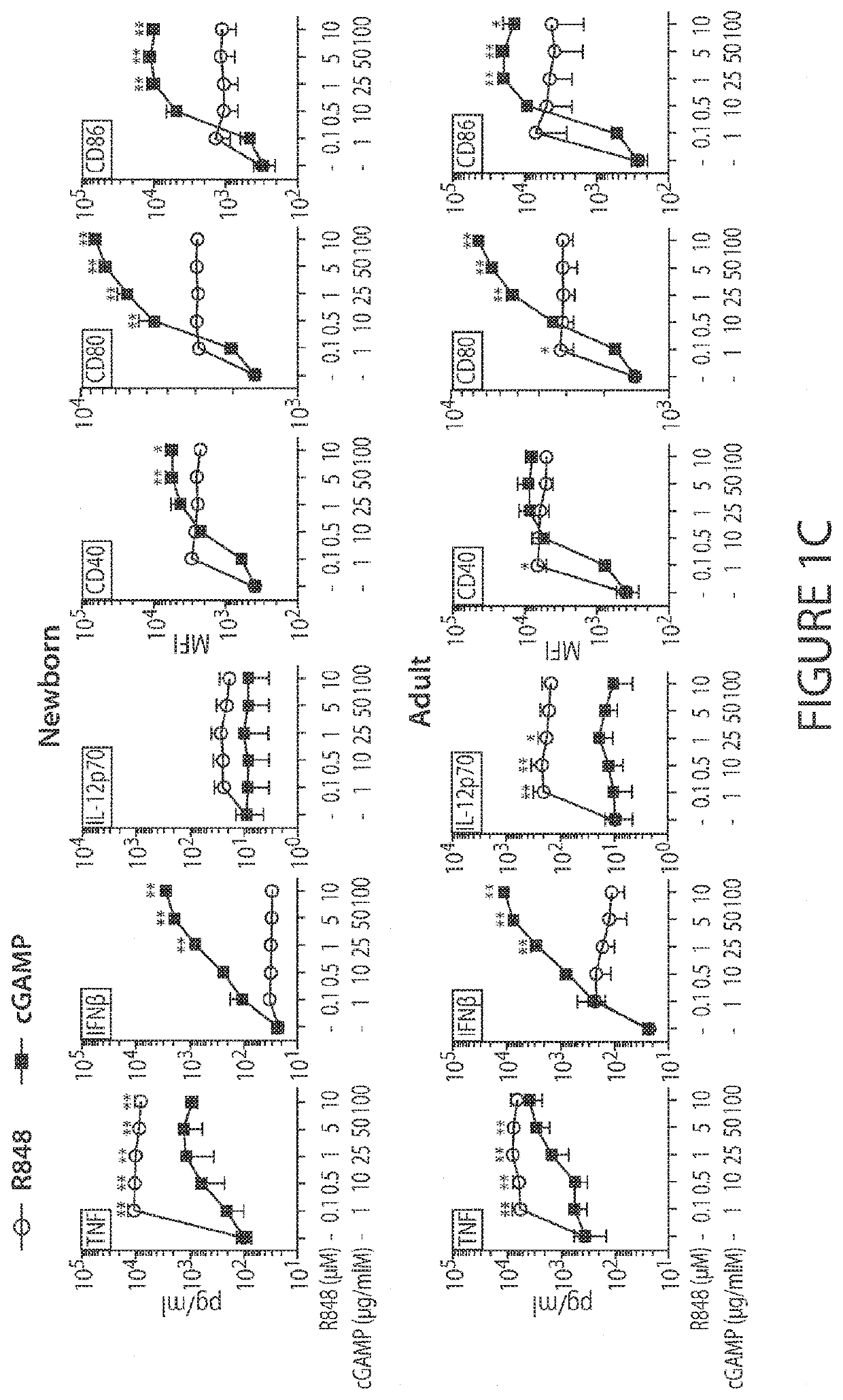Stimulator of interferon genes (STING) ligands and uses thereof
a technology of interferon genes and sting ligands, which is applied in the field of stimulating interferon genes (sting) ligands, can solve the problems of limiting vaccine efficacy, sting has not yet been investigated as an adjuvant target for early life immunization, and vaccines often demonstrate reduced efficacy in newborns and young infants compared to adults, so as to enhance antigen-specific antibody production
- Summary
- Abstract
- Description
- Claims
- Application Information
AI Technical Summary
Benefits of technology
Problems solved by technology
Method used
Image
Examples
examples
[0171]Immunization is key to preventing infectious diseases, a leading cause of death early in life. However, due to age-specific immunity, vaccines often demonstrate reduced efficacy in newborns and young infants compared to adults. Here, in vitro and in vivo approaches were combined to identify adjuvant candidates for early life immunization. Newborn and adult bone marrow-derived dendritic cells (BMDCs) were employed to perform a screening of pattern recognition receptor agonists, and found that the Stimulator of Interferon Genes (STING) ligand 2′3′-cGAMP (hereafter cGAMP) induces a comparable expression of surface maturation markers in newborn and adult BMDCs. Then, the trivalent recombinant hemagglutinin (rHA) influenza vaccine, Flublok, was utilized as a model antigen to investigate the role of cGAMP in adult and early life immunization. cGAMP adjuvantation alone could increase rHA-specific antibody titers in adult but not newborn mice. Remarkably, as compared to alum or cGAMP ...
PUM
| Property | Measurement | Unit |
|---|---|---|
| mol % | aaaaa | aaaaa |
| mol % | aaaaa | aaaaa |
| diameter | aaaaa | aaaaa |
Abstract
Description
Claims
Application Information
 Login to View More
Login to View More - R&D
- Intellectual Property
- Life Sciences
- Materials
- Tech Scout
- Unparalleled Data Quality
- Higher Quality Content
- 60% Fewer Hallucinations
Browse by: Latest US Patents, China's latest patents, Technical Efficacy Thesaurus, Application Domain, Technology Topic, Popular Technical Reports.
© 2025 PatSnap. All rights reserved.Legal|Privacy policy|Modern Slavery Act Transparency Statement|Sitemap|About US| Contact US: help@patsnap.com



